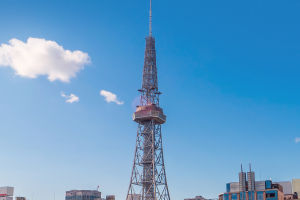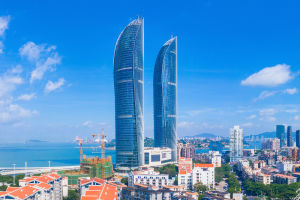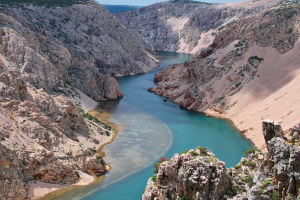The Tower of Hercules, constructed as a lighthouse by the Romans, dates back to the late 1st century or early 2nd century. Its original core is preserved within the architectural lining added in the 18th century.
At its base, a Latin inscription, protected within a small building, reveals the name of its probable architect, Gaius Sevius Lupus, hailing from Aeminium (modern Coimbra, Portugal).
It is widely believed that the tower was built during Emperor Trajan's reign (A.D. 98–117).
Purpose and Significance
Located in the port of Brigantium (modern A Coruña), the lighthouse served Roman maritime needs by guiding commercial and vessels navigating the dangerous North Atlantic routes. This strategic location was crucial for ships rounding Cape Finisterre or heading to Britain. Archaeological findings indicate the tower originally featured an outer wall and a ramp leading to its platform. Its interior, divided into three floors with barrel-vaulted openings, likely stored combustible materials for the beacon and housed the service staff.
The Medieval Tower
Transition to a Defensive Role
Dear Lykkers, with the fall of the Roman Empire in the 5th century, the tower's function as a lighthouse diminished due to reduced maritime activity. It later served as a defensive structure, enduring invasions by barbarians and Norman raids from the 9th century onwards. The tower became a territorial landmark and a fortification disputed among monarchs, and nobility. Archaeological evidence suggests it was equipped with a kitchen for defenders and surrounded by a stone building during this era.
Quarry and Decline
By the 13th century, the tower had fallen into disuse and became a source of building materials for the construction of A Coruña. Its outer walls and access ramp were dismantled, and the remaining arches were repurposed. Restrictions on quarrying were finally imposed in the 16th century.
The Recovery as a Beacon
Initial Restoration Efforts
In the 16th century, the tower began to regain its role as a lighthouse. Surveillance measures were implemented, including a small moat and defensive barriers. By the late 17th century, wooden stairs and a balcony were added, and oil lamps were installed to aid navigation, funded by a tax on docking ships.
Significant Renovation in the 18th Century
Major restoration commenced in 1788, led by engineer Eustaquio Giannini. The Roman core was encased in stone, giving the tower a neoclassical facade. A spiral band reminiscent of the Roman ramp was added, and the top was redesigned with octagonal structures housing a coal-fueled beacon. By 1790, the restoration was complete, and subsequent upgrades improved the surrounding area and access roads.
Modern Transformations
Advancements in Lighting Technology
Between 1799 and 1806, the coal lamp was replaced with an oil-fueled rotating beacon, necessitating structural modifications. A glass lantern, still present today, was installed along with a stone pinnacle and a lightning rod.
Electricity and 20th-Century Developments
Electricity was introduced to the lighthouse in 1927, enhancing its functionality. The interior saw minor upgrades, including the establishment of Spain’s first School of Lighthouse Keepers (1849–1854). The surrounding area underwent significant development, with accommodations for keepers constructed in 1861 and 1956.
A Testament to History
The Tower of Hercules stands as the oldest Roman lighthouse still in use and was designated a UNESCO World Heritage Site in 2009. Its rich history, from guiding ancient ships to its modern role, continues to captivate visitors and historians alike.


